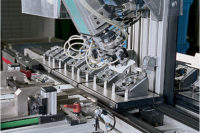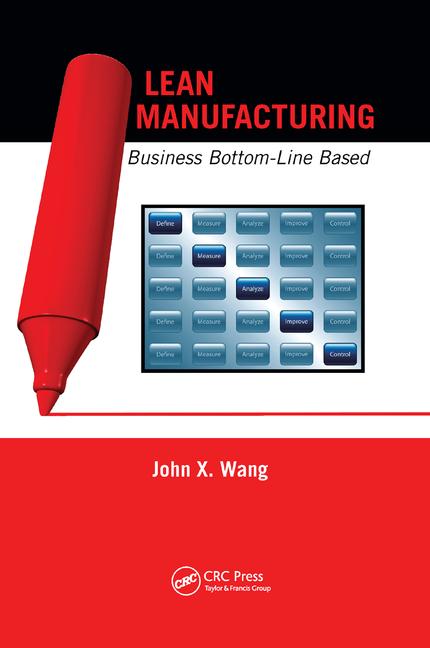In the mid-19th century, manufacturing engineers considered mechanical power transmission to be state-of-the-art technology. Before the advent of individual electric-drive motors in the early 20th century, a mind-boggling maze of overhead line shafts, countershafts, leather belts, belt shifters, pulleys and gears were a common sight in manufacturing plants.
Complex networks distributed power to machine tools and assembly equipment. However, they were cumbersome, loud, finicky and dangerous. The devices also required constant maintenance and repair.
Early multistory factories relied on a central power source, such as a steam engine or a water wheel, which was located in the basement or on the first floor. It turned a vertical main shaft that extended through each floor of the facility. On every floor, one or more line shafts attached to the ceiling connected to the main shaft and extended the length of the floor. Each line shaft turned as the main shaft turned. A series of belts, gears and pulleys attached to each line shaft powered individual machines.
Shafting was supported by metal hanger-plates that were attached to the bottom faces of girders, beams and joists. They were spaced according to either the number of machines, the power load taken off or the layout of the shop, with an 8 to 10 foot span between hangers. Sections of the line shaft were joined together by a wide variety of coupling devices, such as exposed flanges.
From a main shaft on each floor, power was distributed to several countershafts. Pulleys transferred power from the shaft that connected with each machine. Belts extended downward from the shaft to the machinery below it. Sometimes, belts ran through slots in the floor to power equipment located on floors above or below.
Early transmission systems used rope attached to wood gears and shafts. However, engineers soon favored cast iron for its strength and wear resistance. In the 1870s, flat belts proved to be more efficient at higher speeds than rope. Early belts were made either of leather or of a closely woven cotton duck built up and impregnated with balata, a form of rubber with low elasticity.
“Both balata and leather belts could be reliably spliced into continuous loops necessary for line shaft power systems,” says Rolf Achilles, author of Made in Illinois (Illinois Manufacturers Association). “But, installing either type of belt correctly called for the skill of an experienced craftsman. The belt was slung over the line shaft and joined into an endless loop by one of several methods.
“Leather belts were commonly joined by a process in which belt ends were shaved or skived into matching bevels, glued together, then dried for 8 hours,” adds Achilles. “Balata belts were joined using a similar method which involved vulcanization with heat clamps.”
Higher speeds increased the effectiveness of using large leather belts to drive horizontal line shafts. According to period sales literature from J.B. Hoyt & Co. (New York), “a leather belt will safely and continuously resist a strain of 350 pounds per square inch and a section of 0.4 of a square inch over a turned cast-iron pulley will transmit the equivalent of a horse power at a velocity of 1,000 fps. The most perfect belt, especially where great power is to be conveyed, is two-ply. The parts are so lapped that the joints on one side are equidistant from the joints on the other side.”
Many engineers devoted endless hours to achieving optimum performance from belt transmission systems. “There were two distinct schools of thought as to the nature of belt action, each of which had its champions who proved by the binomial theorem or a Fourier series that their particular theory was the only correct one,” wrote former machinist Fred Colvin in his autobiography, Sixty Years With Men and Machines, which was published in 1947. “One group . . . held that the belt operated entirely by the friction between it and the pulley face. The opposition group insisted that the driving force was clearly the result of the pressure of air against the belt during its contact with the pulley. The air, they contended, lost power when it was trapped between belt and pulley; hence all you had to do was allow the air to escape.
“The proponents of the air theory seemed to have the upper hand for a time,” adds Colvin. “Some manufacturers began making perforated belting, while others drilled their pulley rims so full of vent holes that the ‘trapped’ air had no trouble whatever in working its way out. Another moot point was the question of how smooth the pulley face should be for best results.”
Engineers also debated the correct placement of machines under the shafts and belts. To prevent undue bending of the line shaft due to belt pull, Colvin says “it was customary to employ a kind of military strategy by arraying the machines in opposing ranks so that the pull of the belts in one direction would be approximately offset by an equal amount of pull in the opposite direction.”
The constantly slapping belts were temperamental and caused numerous headaches for engineers. Loosening and slippage were everyday occurrences in most factories.
“Dissipation of the steam engine’s original horsepower output through friction and torsional losses was not the only drawback to belt drives,” notes Colvin. “Fairly accurate shaft alignment was a constant problem, especially on long lines. Without a tolerably fair degree of alignment, the belts had a perverse way of creeping to one side of the pulley, causing one edge of the belting to develop a beautifully scalloped effect, after which it had to be thrown out.
“Trickiest of all, however, was the quarter-turn belt for driving a vertical shaft from a horizontal shaft, or vice versa,” adds Colvin. “Those who have never had to wrestle with the quarter-turn belt have no idea how such a simple device could prove so unruly.” Static electricity also plagued belt-drive transmission systems.
If a new pulley had to be installed to accommodate a new machine, Colvin says the entire line shaft had to be shut down. Every pulley on it had to be dismantled so that the new pulley could be installed, which often turned into a tedious job.
When belts broke, which was not uncommon, machine operators were often injured. With little or no safety guards, workers also had to be careful to avoid getting beards, hair or clothing caught in the fast-moving belts. The results could be disastrous.
“It was always an exciting adventure to watch a new man put on a quarter-turn belt,” recalls Colvin. “You could of course be fairly certain it would fly off instantly, but what made it interesting was trying to guess whether he would break a window or only hang himself on the rafters.”
Before electricity was installed in factories, mechanical power distribution dictated the layout of the shop floor. Lathes, presses, riveters and other devices had to be placed parallel to the shafting, which turned constantly.
“This system had inherent problems,” says Lindy Biggs, a history professor at Auburn University (Auburn, AL) and author of The Rational Factory (Johns Hopkins University Press). “The multiple transmissions meant lost energy, and one part of the factory could not be used without all of the power being engaged.”
The belts also blocked light and interfered with movement throughout the factory. “The system made expansion difficult because building size was limited according to the power system,” says Biggs.
“Millwork was a complicated machine and one that was inefficient and expensive to maintain,” adds Betsy Hunter Bradley, author of The Works (Oxford University Press). “The system was costly to install, and its arrangement was not easily altered. In many cases nearly a third of the power that entered the system was dissipated.
“During the 19th century, the mechanical distribution of power was a limiting factor in industrial architecture,” notes Bradley. “Millwork furthered the division of labor and the use of separate buildings for machine-powered operations and handwork. It restricted the length of buildings to the distance that shafting could be operated efficiently.”
Despite those disadvantages, many manufacturers were reluctant to convert from steam- to electric-driven machinery in the early 1900s. “Large amounts of capital were sunk in power equipment, including steam boiler plants, mechanical shafts, belts and pulleys, and factory design specifications to support this cumbersome transmission system,” says Harold Platt, a professor of history at Loyola University (Chicago) and author of The Electric City (University of Chicago Press). “[The electric company] sales pitch fell on deaf ears because it asked factory managers to junk their investment in steam power equipment, install a costly set of new wires and motors, and begin paying a monthly power bill.”
However, more and more engineers began advocating group drive to replace central power sources. With group drive, electric motors were used to drive small groups of machinery. Belting and shafting still transferred power from the motor to the machines, but one group of machines could be operated without engaging the entire factory. “Group drive allowed changes in the shop floor layout because the line shaft no longer dictated placement,” says Biggs.
The next step was unit drive machinery—one electric motor attached to or built into one machine. “Unit drive allowed independent operation of machines using no belts and no shafting, and flexibility increased range or machine speed, efficiency of power use and flexibility in machine control,” explains Biggs. Unit drive systems allowed engineers new freedom to experiment with shop floor layout.
“Without the shafts the engineer moved away from the parallel row of machines,” says Biggs. “New arrangements improved production flow, made better use of floor space and increased efficiency.”
According to Platt, coal shortages and government policies during World War I persuaded manufacturers to eventually abandon their steam engines. “In just a decade, from 1919 to 1929, the conversion of American industry to the electric-powered motor would create a new economy based on assembly line methods, standardization, specialization, large-scale operations and higher wages,” says Platt.
By the early 1930s, powerful AC motors were developed to provide constant speed even under variable loads. In many factories, flat transmission belts were replaced by V-belts.
“Individual motor drive eventually proved advantageous in almost all factories,” says Patrick Malone, a professor of American Civilization at Brown University (Providence, RI) and co-author of The Texture of Industry (Oxford University Press). “The availability of reasonably priced motors helped to spread powered manufacturing to small establishments that could not afford the capital costs of water-power systems or steam engines. There were substantial energy savings from elimination of shaft drives, with their friction and need for lubrication and adjustment. Managers had more flexibility in choosing the best positions for particular machines in a production process.”
Today, working examples of overhead line shafts and belts can still be viewed in a handful of American museums, including the Cincinnati History Museum (Cincinnati), the East Broad Top Railroad (Rockhill Furnace, PA), the Edison National Historic Site (West Orange, NJ), the Hagley Museum (Wilmington, DE), the Hanford Mills Museum (East Meredith, NY), the Henry Ford Museum & Greenfield Village (Dearborn, MI), and the Slater Mill Historic Site (Pawtucket, RI).







